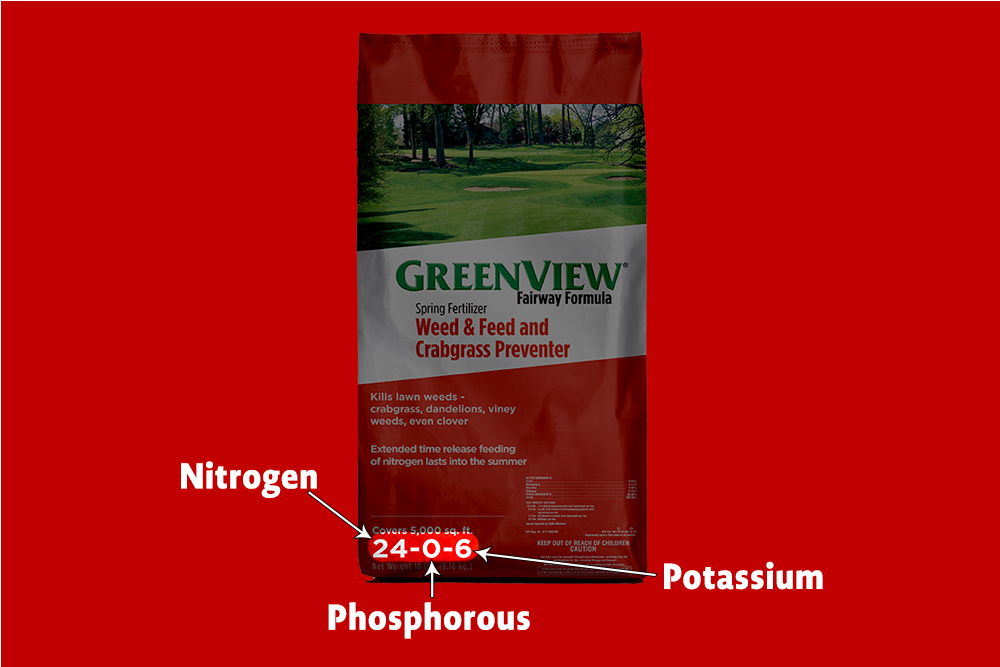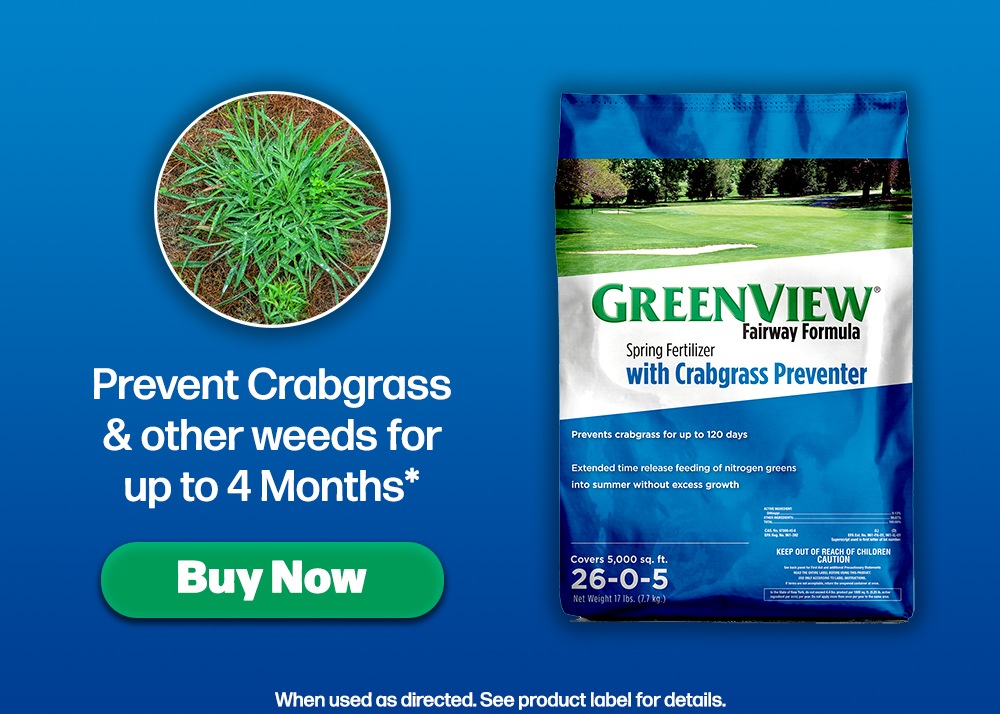Lawns grow at different rates and face different challenges throughout a growing season, which is why different lawn fertilizers are formulated for different times.
Heading into spring, lawns shift into their fastest blade-growth mode and face peak pressure from new weeds.
That’s why spring lawn-care fertilizers focus on growth-fueling nitrogen and add options for controlling and preventing weeds.
Heading into fall, though, grass growth slows but the lawn faces the harsh and changeable weather of winter, especially in northern, cool-season lawns.
That’s why fall lawn-care fertilizers typically contain higher levels of potassium, a lawn nutrient that thickens grass cell walls and helps grass cope with weather stresses.
With the advent of slow-release nitrogen technology that GreenView uses in its Fairway Formula lawn fertilizer, lawns can be maintained with just two applications per year – one in the spring and one in the fall.
Those numbers on the bag
A quick way to gauge the difference between a spring fertilizer and a fall fertilizer is to look at the three-digit number on the fertilizer bag.
The first number is the percentage of the bag’s weight that contains nitrogen, the lawn’s main fuel for blade growth, and the production of chlorophyll.
The second number is the percentage of phosphorus, which is important for root growth and energy production. However, since most soils already have adequate phosphorus, this number is typically zero.
The third number on a fertilizer bag is the percentage of potassium, the nutrient that fends off drought, cold injury, disease, and other lawn stressors.
A code of 24-0-6, for example, tells you that 24 percent of the product’s weight is nitrogen, none of it is phosphorous, and 6 percent is potassium.

Spring fertilizing
GreenView’s Fairway Formula Lawn Fertilizer is a 27-0-5 formula that’s designed to fertilize over a 12-week period. Some 63 percent of its nitrogen comes from slow-release sources.
Although it’s mainly targeted for use as the grass starts growing in spring, it can be applied later in spring, or any time grass is actively growing.
For those with crabgrass troubles, GreenView Fairway Formula Spring Fertilizer with Crabgrass Preventer adds a crabgrass control to a nearly identical fertilizer – one that’s 26-0-5 and also effective for 12 weeks.
This product prevents crabgrass seeds from germinating and also kills crabgrass plants that are four weeks or younger. It’s best applied when forsythia and lilac bushes are blooming – anywhere between late March and early May in most of the U.S., depending on how that season’s weather is unfolding.
A third spring option is GreenView Fairway Formula Spring Fertilizer Weed and Feed and Crabgrass Preventer, which adds a weed-killer to the fertilizer and crabgrass control.
This product kills dandelions, clover, viny weeds, and more than 200 other weeds in addition to preventing crabgrass and fertilizing with a 24-0-6 fertilizer that’s effective for 12 weeks.
It’s best applied in mid-spring when dandelions are growing but haven’t yet gone to the “puffball” stage.

Fall fertilizing
When attention turns to helping a lawn get through a cold winter, products are available that boost the level of potassium.
GreenView’s Fairway Formula Fall Fertilizer, for example, switches to a 30-0-12 formulation, which is double the amount of potassium as in the spring fertilizer.
Some of the new nitrogen is needed to keep grass green and growing through fall, while the rest goes to early-spring green-up the following season.
The potassium boost, meanwhile, improves the health and vigor of turfgrass by encouraging root growth, toughening cell walls to guard against stresses and disease, and aiding in the uptake and use of water and other micronutrients in the soil.
This fall fertilizing is ideally done in September or October.

GreenView’s Annual Lawn Plan takes away the timing guesswork by monitoring each year’s weather conditions and automatically shipping the right product at the right time.
Note: Check with your local government or Extension office for any additional rules on the timing of fall fertilizer. Some states and municipalities have cutoff dates (typically mid-November) for fall lawn fertilizing. Also, never apply fertilizer to frozen soil.